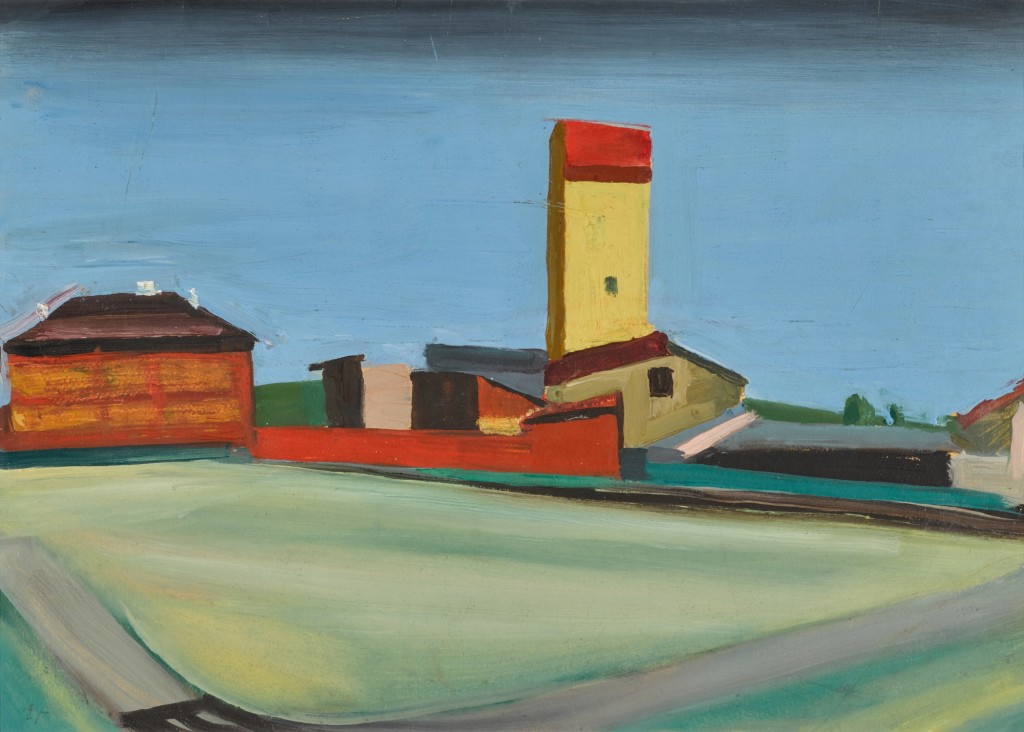Between 1985 and 1989 I acquired a group of paintings from Rozhdestvensky from the 1920s and 30s. In 1985, I bought several works from what one might call his female series: Seated Woman with a Jug, Portrait of a Woman in Red, Girl in a Red Beret, which he said was one of his very last paintings.
—Dr. Valentina Jerlitsyna-Zharskaya, July 2020
This reminiscence found in a catalogue note for a sale of Russian Art that took place recently at Sotheby’s in London riveted my attention. I might have ignored it—had the prices achieved for the paintings cited not been so shocking.
I had been breezing through the lots in the online catalogue, as I often do now, feeling wistful for those long-ago days when one could savor all the pre-sale excitement of visiting the auction house, attending a reception, and sitting in a crowded and buzzing saleroom. Those experiences, once so intoxicating, have now all become “virtual” and may remain so for the rest of 2021.
And yet even online, a Russian Pictures sale at one of the major auction houses offers much diversity of themes and styles and historical curiosities. Hence the Sotheby’s sale catalogue showed heroic views of Cossacks and battle scenes; dreamy mythological fantasies; lush landscapes and farm vistas; royal portraits and peasant studies; and theatrical costume designs aplenty by Alexander Benois, Léon Bakst and Natalia Goncharova. Every picture in the sale seemed to have a rich and colorful narrative.
But it was this group of nine paintings with the arresting provenance that jumped out at me, offered as they were as a complete collection, a spectacular archive of Russian avant-garde art.
The pictures were all by the artist Konstanin Ivanovich Rozhdestvensky (1906-1997), a name thoroughly unknown to me. But as the catalogue essay revealed, Rozhdestvensky was a figure of great esteem in his native Siberia. He had studied under Kazimir Malevich, the legendary avant-garde artist and theorist, and during the 1920s and 30s he created many stylish and striking works. And yet in 1935 Rozhdestvensky quit painting, apparently not wishing to work in the only style then possible for an artist in the Soviet Union—socialist realism.
So instead he became a curator of art, rising high in the Soviet bureaucracy and building an impressive career. From 1963 until 1988 Rozhdestvensky served as Secretary of the Union of Artists of the Soviet Union, responsible for all art exhibitions throughout the country as well as overseeing “the vast holdings of the Union.”
And suddenly last December 1st, out of the blue, Sotheby’s presented a trove of his long-forgotten paintings. Some of these were portraits from his “female series” and acquired (in those words collectors love to hear) directly from the artist. I could barely believe my eyes as I scrolled through the catalogue, comparing the pre-sale estimates with the final prices achieved.
Portrait of a Woman in Red (1931), for example, estimated at £60,000-80,000, brought £523,000; Girl in a Blue Beret (1930), estimated at £50,000-70,000, made £438,500; and Boy in an Ushanka (1928), estimated at £20,000-30,000, brought £189,000. And making over ten times its high estimate was a bright farm scene entitled Grain Silo (1935). It made an astounding £644,500.
A sale like this comes along every so often, and when it does private collectors and museum curators alike take serious notice and bid accordingly—even in the lockdown, masked, socially-distanced and online-only mode in which we now find ourselves in this New Art Market.

